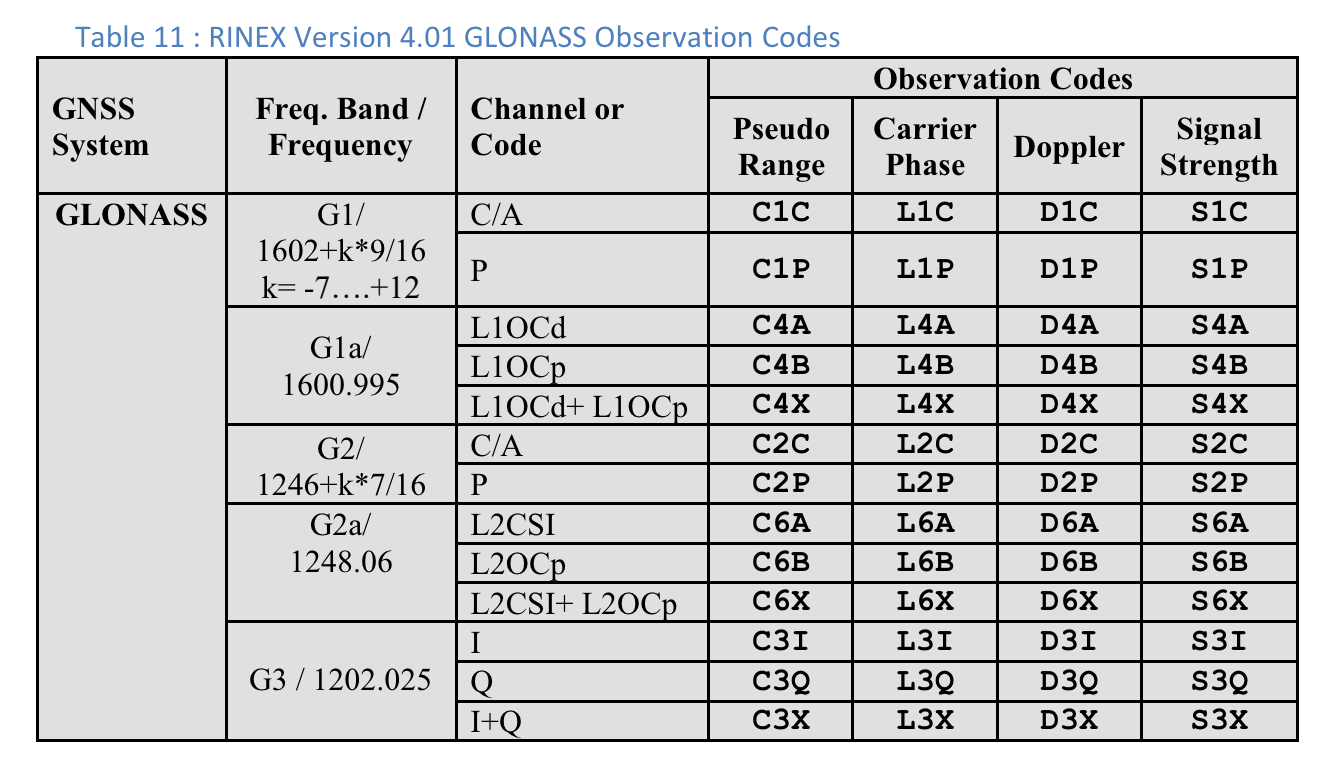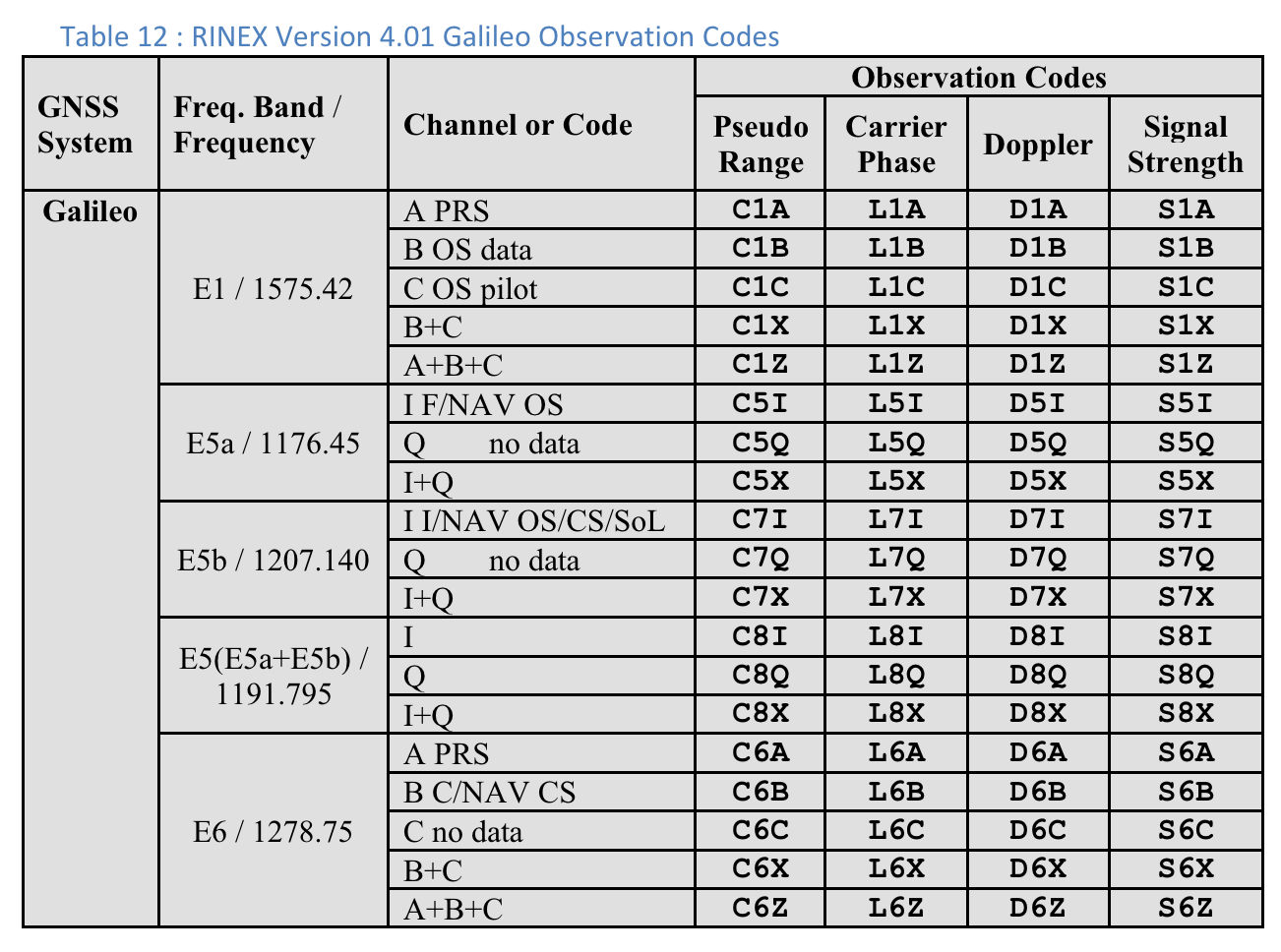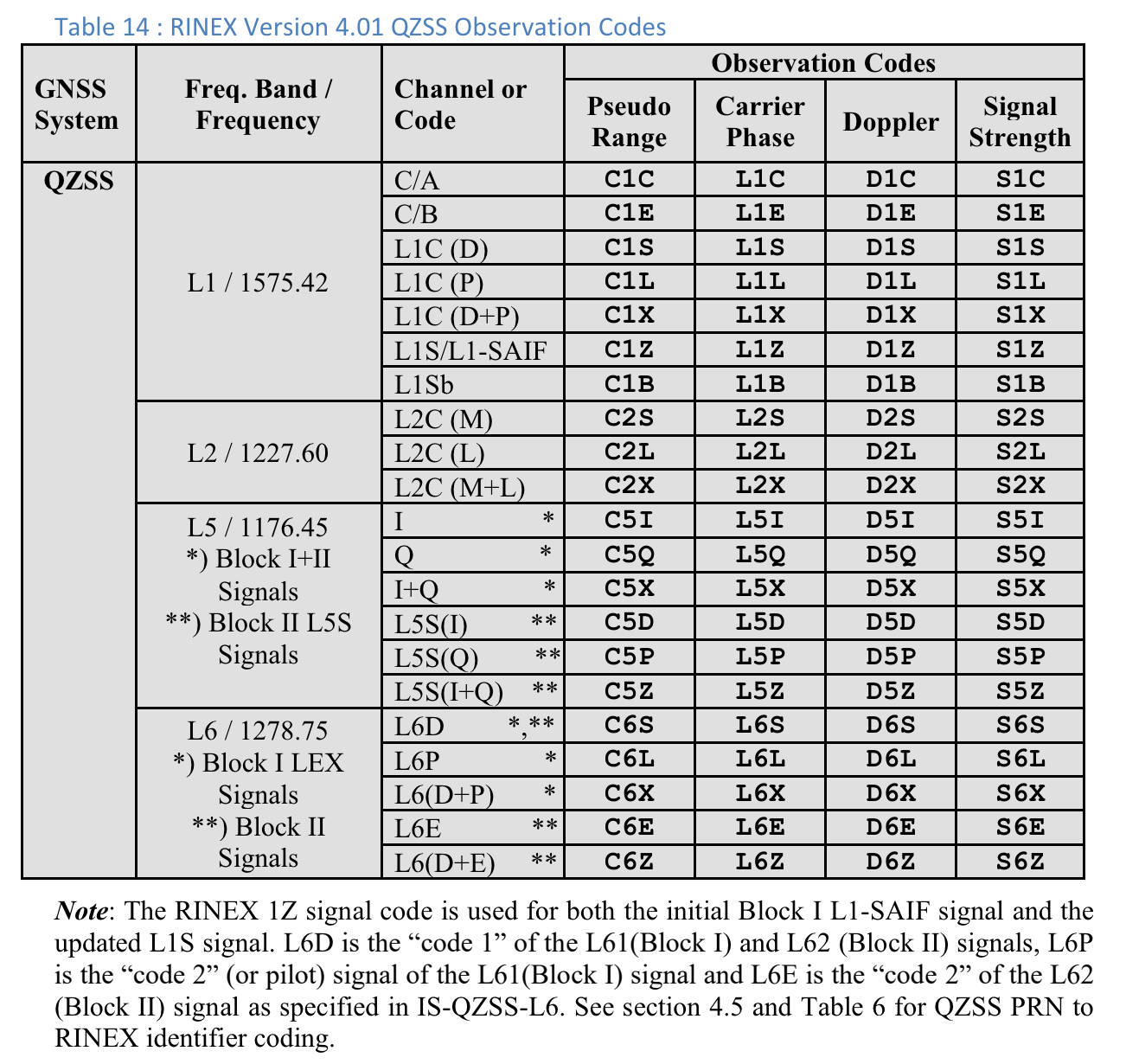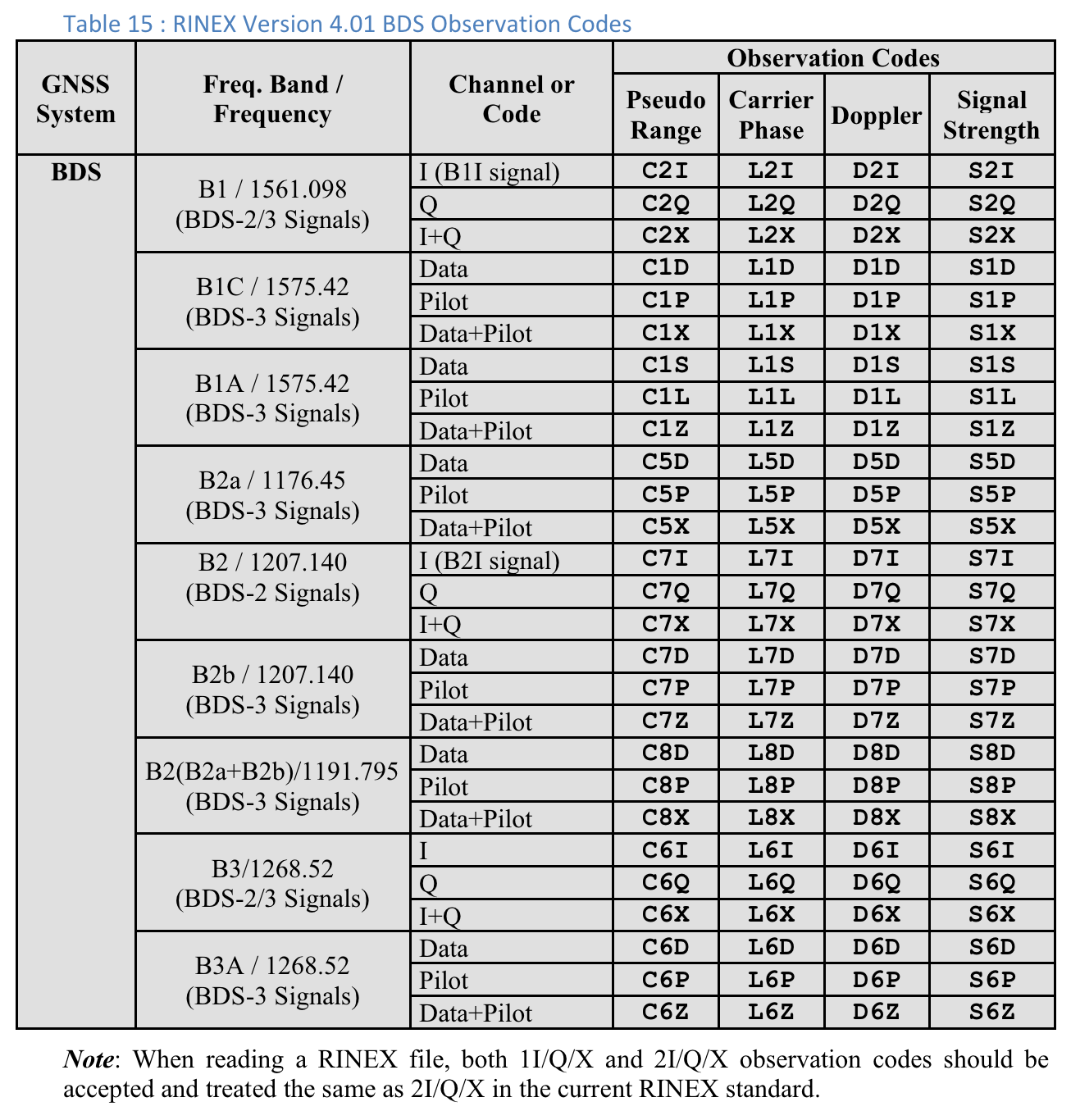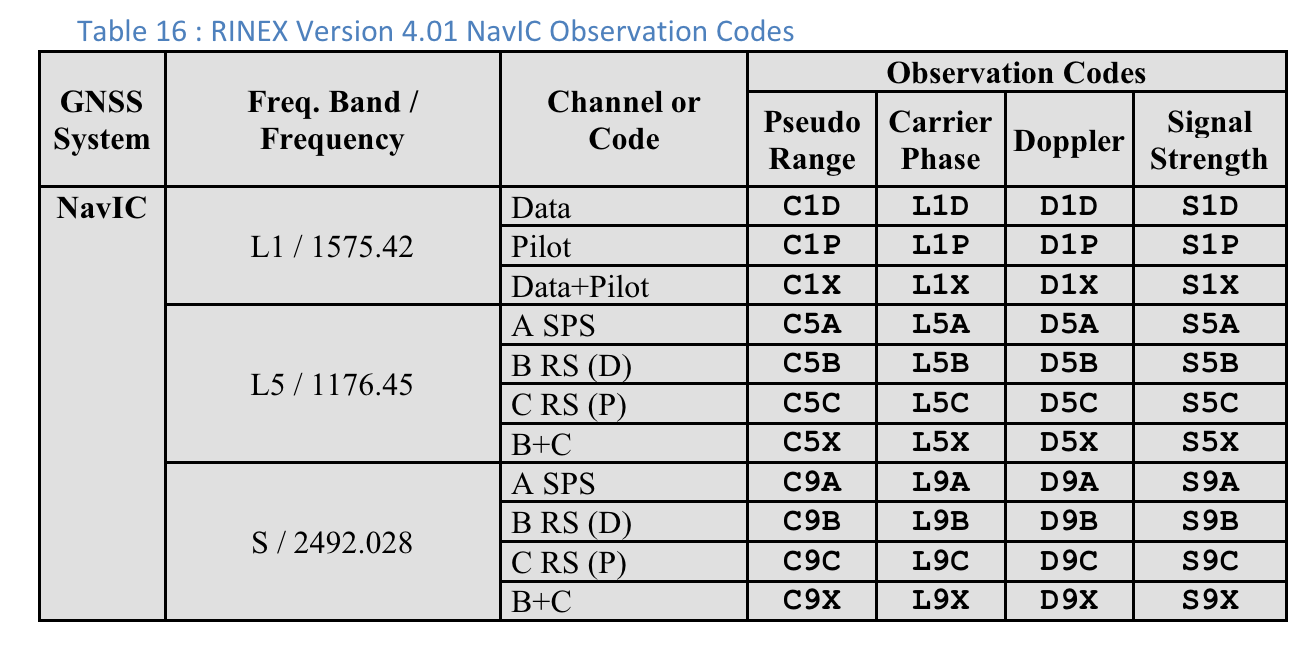GnssLogger v3.1을 사용하면 사용자가 측정값 화면에서 원시 GNSS 데이터를 보고 분석할 수 있습니다.
다음은 측정 화면과 이 데이터를 최대한 활용하기 위한 몇 가지 팁입니다.
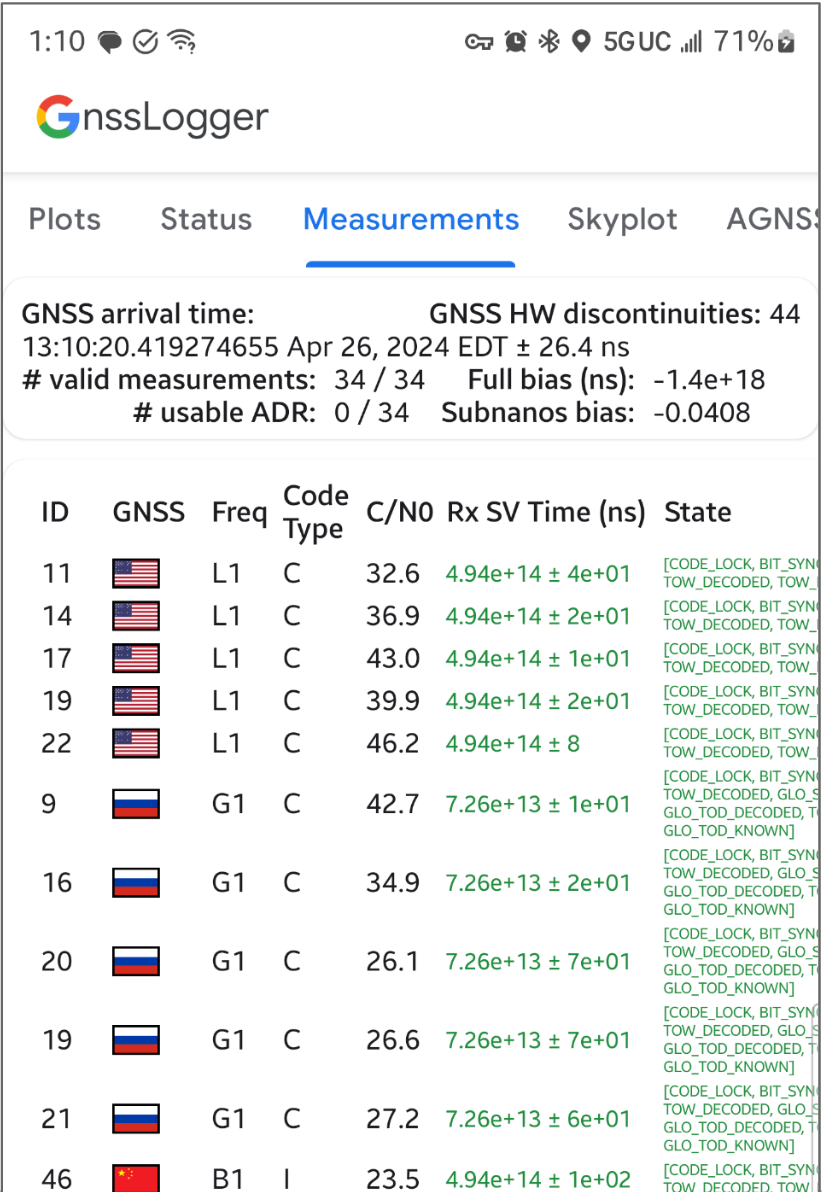
상단 카드에서 다음을 수행합니다.
- 왼쪽 상단에는 GNSS 시계 데이터 (
GnssClock에 해당)가 표시됩니다. - 오른쪽 상단에는 GNSS 하드웨어 (HW) 비연속 개수 (
GnssClock.getHardwareClockDiscontinuityCount)가 표시되며, 이 값은 듀티 사이클링의 사용 여부를 확인하는 데 도움이 됩니다. 이 카운터가 증가하면 GNSS 신호의 연속 관찰에 중단이 발생했음을 나타냅니다 (예: 듀티 사이클링 사용). 카드 아래에는 모든 측정의 집계 정보가 표시됩니다.- # valid measurements — 측정이 유효하다고 간주되려면
GnssMeasurement.getState에서STATE_CODE_LOCK및STATE_TOW_KNOWN또는STATE_TOW_DECODED플래그를 설정해야 합니다. - # 사용 가능한 누적 차동 범위(ADR) — ADR(이동통신사 단계)이 위치 지정에 사용할 수 있는 것으로 간주되려면
ADR_STATE_VALID플래그를 설정해야 하며GnssMeasurement.getAccumulatedDeltaRangeState에서ADR_STATE_RESET또는ADR_STATE_CYCLE_SLIP플래그를 설정할 수 없습니다.
- # valid measurements — 측정이 유효하다고 간주되려면
기기가 듀티 사이클링이 사용 중지된 탁 트인 공간에 있을 때도 항상 사용 가능한 ADR 0을 보고하는 경우, 기기가 고정밀 GNSS에 사용할 수 있는 캐리어 위상 측정을 지원하지 않는다는 의미입니다.
하단 카드에서 각 행은 개별 GnssMeasurement를 나타냅니다.
- 코드 유형 열에는 RINEX 4.01에 정의된 코드 유형을 사용하여 GNSS 신호의 정확한 유형이 표시됩니다. 예를 들어 코드 유형이 'C'인 GPS L1 신호는 RINEX 표의 3자리 코드에서 마지막 문자로 표시된 대로 L1 C/A를 나타냅니다. 마찬가지로 GPS L5 Q에는 'Q' 코드 유형이 있습니다. 참고로 이 문서 끝에 있는 다른 GNSS 컨스텔레이션의 표를 확인하세요.
- Rx SV Time (ns) 열에서 측정값이 유효하면 텍스트가 녹색입니다.
- 상태 열에서 측정값이 유효하면 상태도 녹색입니다. 상태는 GnssMeasurement.getState() 필드에 설정된 비트 플래그의 사람이 읽을 수 있는 버전을 보여줍니다.
공개 Issue Tracker를 사용하여 새로운 기능에 관한 의견을 보내 주세요.
표 10 : RINEX 버전 4.01 GPS 관측 코드
각 측정의 '코드 유형'은 관련 GNSS 시스템 및 이동통신사 주파수에 관한 RINEX 4.01 사양에 정의된 '의사 범위' 값의 마지막 문자입니다. 예를 들어 'C'는 GPS L1[C/A] 에 사용되고 'Q'는 GPS L5 Q에 사용됩니다.
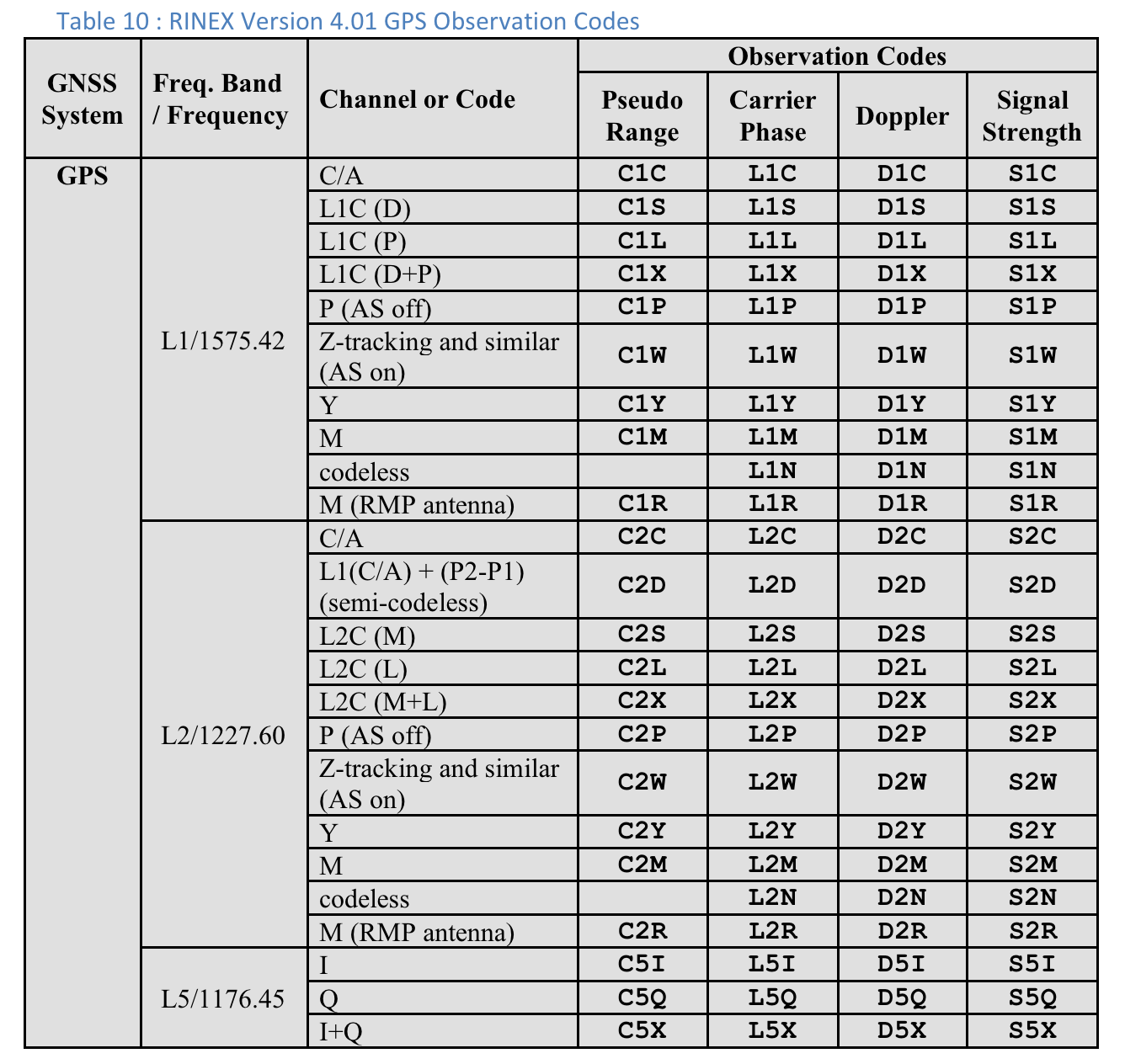
사용자는 오른쪽으로 스크롤하여 각 측정에 관한 추가 열을 볼 수 있습니다.
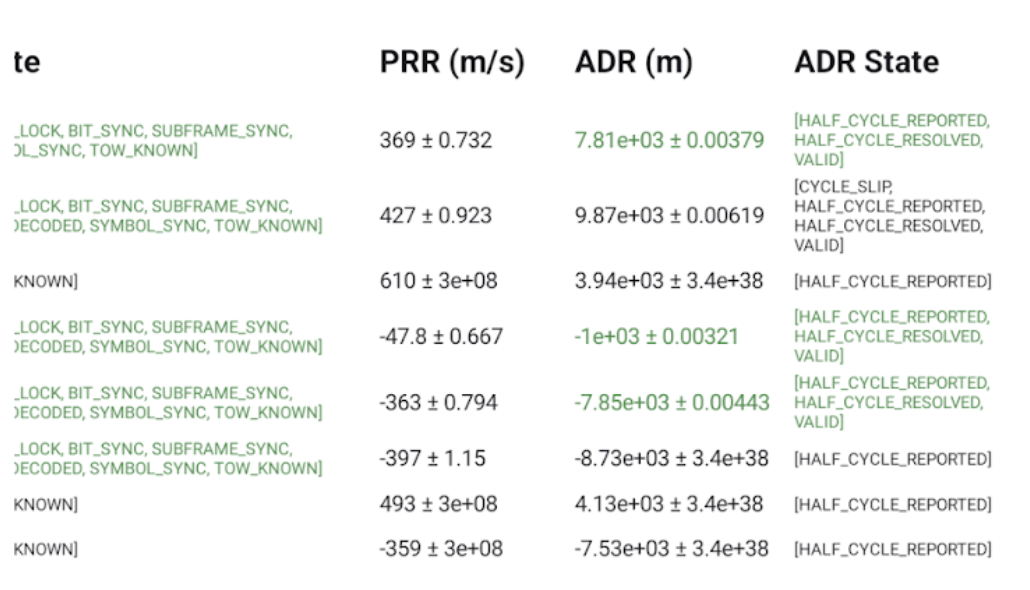
- PRR은 GnssMeasurement.getPseudorangeRateMetersPerSecond()의 가상 거리 속도(단위: 초당 미터)입니다.
- ADR 상태 열에는 GnssMeasurement.getAccumulatedDeltaRangeState() 열에 설정된 비트 플래그의 사람이 읽을 수 있는 버전이 표시됩니다. ADR을 위치 지정에 사용할 수 있는 경우 ADR (m) 및 ADR 상태 필드의 텍스트가 녹색으로 표시됩니다.
RINEX 4.01 관측 코드
Pseudo Range 열의 RINEX 관측 코드에서 마지막 세 글자는 GnssLogger의 측정값 화면에 표시되는 코드 유형 값입니다.
다음은 편의를 위해 RINEX 4.01 사양의 표입니다. 자세한 내용은 전체 사양을 참고하세요.

